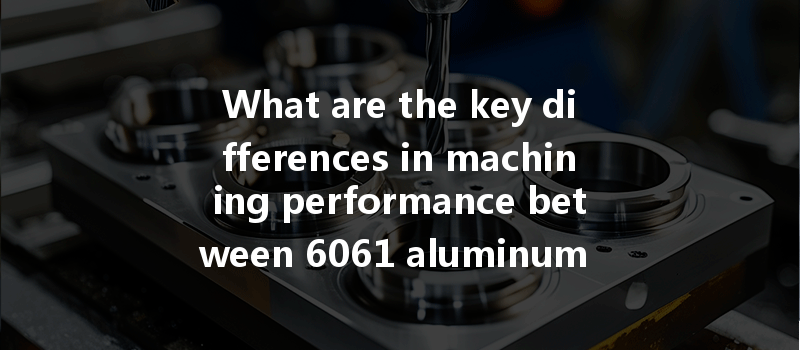Opening
Did you know that the global machining market is projected to reach $232 billion by 2025? With such dynamic growth, understanding the materials used in machining becomes pivotal not just for manufacturers but also for engineers, designers, and end-users alike. Amid the vast array of materials, 6061 aluminum and transparent acrylic (PMMA) stand out for their unique properties and applications. But how do they truly compare when it comes to machining performance? This blog aims to dive deep into this topic, unraveling the strengths and weaknesses of these two materials and providing insights into their optimal machining techniques.
—
Before delving into the specifics of 6061 aluminum and PMMA, let’s clarify what machining entails. Machining is a subtractive manufacturing process, wherein material is removed from a solid block to create parts with precise dimensions. The choice of material is critical, as it directly influences machining costs, tool selection, and the final product’s quality.
1.1 What is 6061 Aluminum?
6061 aluminum is an alloy made primarily of aluminum, silicon, and magnesium. Known for its excellent corrosion resistance, weldability, and overall strength, it is widely used in various applications, from aerospace components to automotive parts. Its machinability is rated as good to excellent, making it a favorite among machinists.
1.2 What is PMMA?
Polymethyl methacrylate (PMMA), also known as acrylic or by brand names like Plexiglas, is a transparent thermoplastic often used as a lightweight or shatter-resistant alternative to glass. PMMA is favored in the signage industry, illuminated displays, and various optical applications due to its clarity and UV resistance.
—
2.1 Cutting Characteristics
2.1.1 6061 Aluminum
When machining 6061 aluminum, one of the key advantages is its ductility, which translates to a smooth cutting process. The melting point of 6061 aluminum is approximately 660°C, making it relatively easy to handle without compromising structural integrity during machining. Its thermal conductivity helps to dissipate heat effectively, reducing tool wear.
2.1.2 PMMA
Conversely, PMMA offers a unique challenge. Its lower melting point (around 160°C) means that excessive heat can lead to melting or deformation during machining. However, when machined correctly, PMMA produces excellent finishing results. The material’s ease of machining makes it ideal for intricate designs; however, operators must be cautious to avoid overheating.
2.2 Tool Selection
Choosing the right tools is essential for effective machining.
2.2.1 Tools for Machining 6061 Aluminum
Typically, high-speed steel (HSS) or carbide tools are used for aluminum machining. These materials provide the necessary rigidity and toughness to handle the material’s characteristics. Coated tools can further enhance performance by reducing friction, leading to cleaner cuts and prolonging tool life.
2.2.2 Tools for Machining PMMA
When it comes to PMMA, tool selection pivots on avoiding overheating. Thus, tools with a sharp edge and less friction are preferred. HSS tools with appropriate geometry to minimize cutting forces are often effective.
2.3 Surface Finish
2.3.1 Finish Quality of 6061 Aluminum
6061 aluminum can achieve a high level of surface finish through processes like CNC machining and anodizing. Two common finish standards are RA 0.8 and RA 1.6, indicating roughness measured in micrometers. For high-performance applications, achieving a smooth finish can significantly enhance the part’s performance and aesthetics.
2.3.2 Finish Quality of PMMA
For PMMA, achieving a clear and polished finish is one of its key advantages. Techniques like polishing and sandblasting can bring out the material’s optical clarity. However, controlling the cutting parameters is crucial; too aggressive machining can result in surface imperfections.
2.4 Machining Speed and Feed Rates
2.4.1 6061 Aluminum
To optimize the machining of 6061 aluminum, operators generally utilize higher feed rates. The material’s excellent thermal properties and ductility allow for quicker machining speeds without significant risk of tool wear.
2.4.2 PMMA
In contrast, machining PMMA requires more caution. Slower speeds and feed rates should be employed to prevent melting. The presence of coolants can assist in maintaining lower temperatures, making the cutting process more manageable.

—
3.1 Tool Wear
Challenge: Tool wear is inevitable, but the rate at which it occurs can vary drastically between materials.
Solutions:
3.2 Material Deformation
Challenge: Both materials have specific deformation tendencies under heat or pressure.
Solutions:
—
4.1 For 6061 Aluminum
4.2 For PMMA
—
5.1 6061 Aluminum Applications
The versatility of 6061 aluminum makes it a go-to choice in aerospace, automotive, marine, and structural applications. When designs require strength without excessive weight, this aluminum alloy often rises to the occasion.
5.2 PMMA Applications
PMMA excels in applications that prioritize transparency and lightness, such as signage, display cases, optical lenses, and safety barriers. Its aesthetic appeal paired with excellent optical properties makes it essential in various industries ranging from retail to architecture.
—
In a world where precision and efficiency matter, understanding the differences in machining performance between 6061 aluminum and transparent acrylic (PMMA) is essential. Both materials have their own unique strengths, challenges, and applications.
By comprehensively evaluating factors such as machining characteristics, tool selection, surface finish, and optimal strategies for working with each material, manufacturers can significantly enhance productivity, reduce costs, and improve product quality.
In conclusion, whether you are engaged in aerospace parts manufacturing, designing retail displays, or involved in engineering projects requiring a clear finish, the insights shared in this blog provide a foundation on which to build successful machining practices. The choice between aluminum and PMMA will depend not only on the material’s properties but also on the specific needs of your project. So, next time you approach a machining task, consider how the characteristics of your chosen material can work for—or against—you in the production process. Understanding these nuances is essential for anyone involved in CNC machining, product design, or manufacturing.
—






